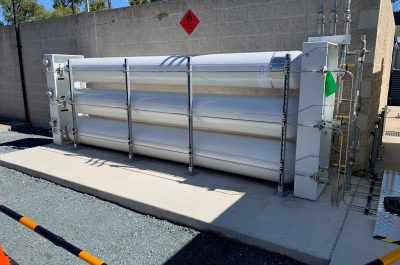Project Edith: A pioneer for our future grid
Project Edith is an exciting new project from Ausgrid in NSW that provides a glimpse of what electricity distribution networks might look like in the future. Bringing together cutting edge technological and innovative economic ideas, Project Edith is a test bed of how networks throughout Australia will continue to deliver safe, reliable, affordable, and renewable energy to customers.
Project Edith offers a very real and exciting glimpse into the future of electricity networks known as Distribution System Operators (or DSOs). Ausgrid and Reposit Power have partnered to deliver this project that combines the latest technology (Dynamic Operating Envelopes or DOEs) with innovative economics (dynamic pricing/tariffs) to provide insights that will shape future energy policy.
The project is named in honour of Edith Clarke, an American engineer who pioneered not only the field of engineering but arguably helped open the door for all women in STEM.
The Why
In a future where Distributed Energy Resources (DER) are ubiquitous and increasingly “smart” there is huge potential to harness the flexibility they offer in a way that is efficient and lowers the bills of everyone connected to the power grid. It is an opportunity that networks all over Australia are trying to realise in different ways – such as through Project EDGE in Victoria and Project Symphony in Western Australia.
The industry is also trying to create a way for customers to be rewarded for their flexibility, through their aggregator, who manages customer devices and responds to market signals on their behalf. This is also one of the key objectives of the Energy Security Board’s (ESB) DER Implementation Plan.
The How
Project Edith hopes to test several assumptions through the two levers:
- dynamic operating envelopes (that communicate the technical limitations of the network i.e. capacity) and
- dynamic network tariffs/pricing (the economic incentive or “market signal” that aggregators respond to).
Through these two levers working in tandem, more capacity can be made available to customers to gain value from market, while ensuring that the network doesn’t exceed its limits. It is therefore up to the aggregator (in this case Reposit Power) to create products or offers that those customers want, based on the signals it receives from the networks. One of the Reposit products included in this trial is its No Bill product.
I won’t bore you with the exact technical details that underpin how it all works, but suffice to say Project Edith builds on previous ARENA-funded work undertaken in the Evolve DER Project.
It just goes to show that important change isn’t always flashy or headline-grabbing and it’s to ARENA’s credit that it supported research that wouldn’t have been possible without it.
What’s next?
Over the next 12 months and all going well, the project hopes to expand participation to other virtual power plants (VPPs), networks and AEMO (Australian Energy Market Operator).
AEMO’s involvement will be a particularly important step as the project team hopes demonstrate how these tools also provide AEMO with certainty of network capacity being available when they receive bids from VPPs.
The project team hopes to release a Project Edith Overview report in the near future, but in the meantime I hope you stay tuned to their website where Ausgrid will be providing updates very soon.
Like its namesake, Project Edith is shaping up to be a real pioneer in the field. It will be exciting to see what she comes up with next.
[1] https://aemo.com.au/en/energy-systems/electricity/national-electricity-market-nem/system-operations/ancillary-services


